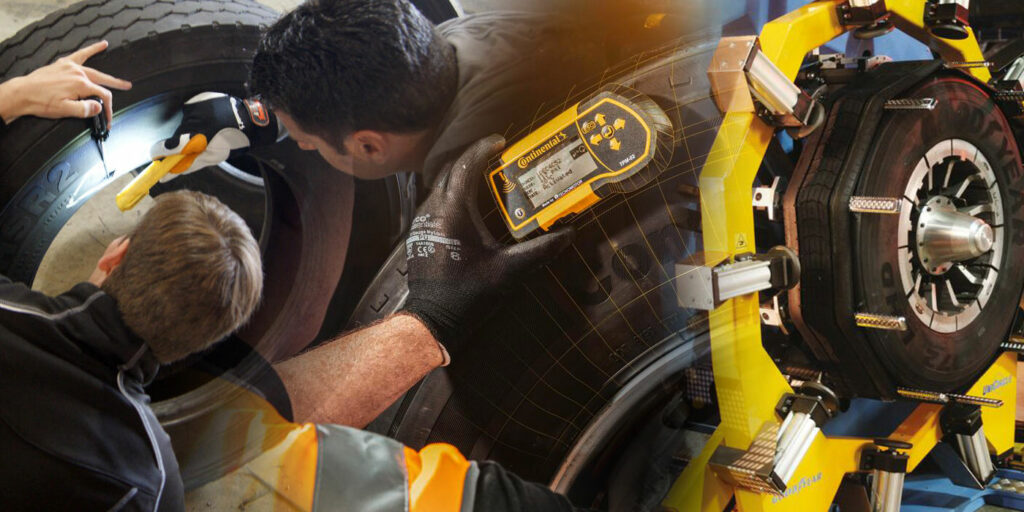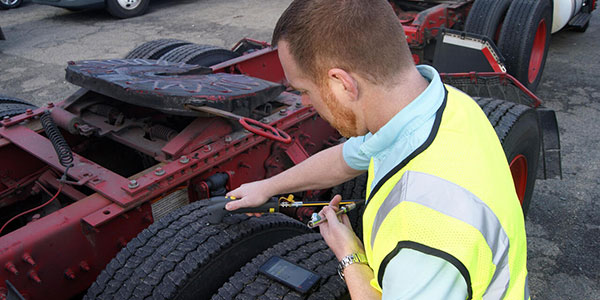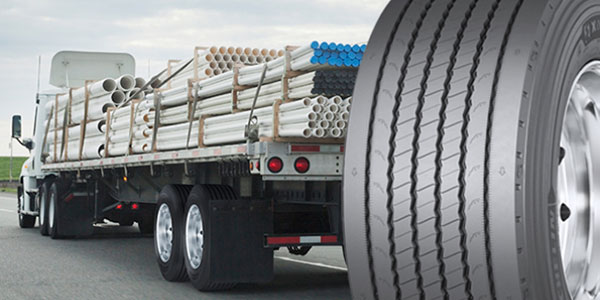If the engine is the beating heart of the truck, and the telematics system its brain, then the tires are the legs, enabling it to complete its runs day in and day out.
Like any good runner, you can’t expect to make good time on your runs, or complete them incident-free, without a good care and maintenance program in place. Runners have expensive shoes, detailed training programs and rest when the time is right; so what are the equivalents for truck tires?
According to Gary Schroeder, executive director of Cooper’s Global Truck and Tire Business, it’s all about “details, details, details.”
Schroeder says that performing routine tire inspections and reviewing the results of those inspections over time will help spot both favorable and unfavorable trends. “Understanding why tires are overperforming is equally important as understanding why tires did not meet tire program cost expectations. An advanced tire program will focus on the total cost of ownership [TCO] of the tires the fleet is running. TCO involves understanding the acquisition price, fuel efficiency, wear or mileage and casing value at the end of the tire’s useful life.”
This process, he says, will require effort and discipline, but will be worthwhile to ensure that your tires are meeting the standard your trucks require.
Dustin Lancy, commercial product marketing manager at Goodyear, says that the tire maker believes an optimal tire service program includes three components: trusted tires, complete tire management solutions and a strong service network.
“A successful tire program should start with a premium tire and retread designed for the application and position,” Lancy elaborates. “Throughout the life cycle of a tire, it is important to perform regular maintenance checks to ensure proper tire pressure levels are maintained, and to monitor for signs of tire damage. Identifying these types of preventative maintenance opportunities can help ensure fleets get the most out of their investment and prevent bigger issues, such as emergency roadside service calls or early tire removal.
“Fleets interested in collecting data on tire performance, such as tire pressure or even temperature, or automating how they monitor treadwear, should consider investing in a tire management solution.
“Lastly, fleets can benefit from aligning with a nationwide service network that can offer both regular, proactive maintenance, as well as emergency roadside assistance in the case of a breakdown,” he concludes.
For a comprehensive tire service program, Carolina Wagner, director of marketing for truck tires with Continental, says fleets should focus on three steps: identifying the proper standards, monitoring progress and being consistent with implementing the standards across all shifts and locations – to bring back our running simile, think of them as the truck tire equivalents of stretching, pacing and drinking plenty of water.
Those standards, she continues, start with tire pressure. Many fleets choose a standard pressure such as 100 PSI as the standard for all tires, when in reality, manufacturer suggestions often differ between tire types. For the steer tire in particular, the number is often much higher. Wagner recommends using the manufacturer load/inflation tables to determine the proper pressure settings based on the load carried.
Additionally, Wagner says that fleets should identify standards for the pull point for each wheel position, which can impact retreadability, as well as one for matching tires in a dual wheel position, as small differences can cause irregular wear.
“The second step is monitoring the progress,” she continues. “This should be done by expert maintenance personnel at the fleet, not just the ‘weekend warriors.’ Fleets should monitor tire inflation at least weekly and should conduct monthly visual inspections to check for wear issues. Outside of under-inflation, the top causes of irregular tire wear are often related to misalignment of the vehicle, worn-out king-pins or other parts, loose U-bolts or other mechanical issues. Uneven or irregular wear must be identified early on, in order to take preventive action and avoid losing the tire. Results may vary fleet to fleet, but should be consistent within fleets. Knowing what is ‘normal’ for their fleet should help identify when a tire or vehicle is not performing at the expected level.”
Additionally, Wagner says, training must be a constant part of the service routine — and should be consistent, too, especially considering the high technician turnover in the industry.
“From a tire standpoint this will include irregular wear, mounting techniques, tire matching procedures and reviewing fleet maintenance protocols,” Wagner adds. “There should also be a focus on involving the drivers in the sharing of knowledge.”
Taking care of your gear: TPMS and ATIS maintenance
As mentioned above, proper tire inflation is extremely important — the biggest issue in the commercial tire industry, according to many manufacturers. Cooper’s Schroeder calls over- and under-inflation a “tire’s worst enemy,” and with that in mind, steps should be taken to prevent it – whether that’s consistently manually checking pressure or investing in a TPMS or ATIS solution. To extend the running analogy once again, think of them as a Fitbit or similar device that ensures you have the best possible info on your runs—or, in this case, your tires’ inflation levels.
If you decide to take the latter route, FE has a guide to help.
However: just because your vehicle is equipped with this type of device does not mean those devices are maintenance-free, notes Mike Steiner, customer engineering support time zone referent for Michelin North America. According to Steiner, you still need to check cold pressure regularly to ensure that the tire is at the appropriate pressure and the tire inflation system is functioning properly.
Keep the run going: Maximizing tire life
In addition to the tips already provided, Michelin Tires provided the following checklist for maximizing tire life:
- Select the best tire for the application.
- Run the correct air pressure for the given load as recommended by the manufacturer’s databook.
- Check tire pressures regularly for correct pressure readings using a calibrated air gauge.
- Make sure that sealing valve caps are in place.
- Check that tire rims and wheels are in proper working condition.
- Ensure that the work site is free of hazards.
- Follow a recommended tire maintenance schedule.
- Make sure machine operators are properly trained.
Keeping pace: Additional tire maintenance tips
So you’ve read all about the major aspects of a good truck tire service program, but what about some of the smaller things that may slip through the cracks? You can find a few additional tips in our story here.
















